Trimetazidine attenuates pressure overload-induced early cardiac energy dysfunction via regulation of neuropeptide Y system in a rat model of abdominal aortic constriction
- PMID: 27855650
- PMCID: PMC5112876
- DOI: 10.1186/s12872-016-0399-8
Trimetazidine attenuates pressure overload-induced early cardiac energy dysfunction via regulation of neuropeptide Y system in a rat model of abdominal aortic constriction
Abstract
Background: Metabolism remodeling has been recognized as an early event following cardiac pressure overload. However, its temporal association with ventricular hypertrophy has not been confirmed. Moreover, whether trimetazidine could favorably affect this process also needs to be determined. The aim of the study was to explore the temporal changes of myocardial metabolism remodeling following pressure-overload induced ventricular hypertrophy and the potential favorable effect of trimetazidine on myocardial metabolism remodeling.
Methods: A rat model of abdominal aortic constriction (AAC)-induced cardiac pressure overload was induced. These rats were grouped as the AAC (no treatment) or TMZ group according to whether oral trimetazidine (TMZ, 40 mg/kg/d, for 5 days) was administered. Changes in cardiac structures were sequentially evaluated via echocardiography. The myocardial ADP/ATP ratio was determined to reflect the metabolic status, and changes in serum neuropeptide Y systems were evaluated.
Results: Myocardial metabolic disorder was acutely induced as evidenced by an increased ADP/ATP ratio within 7 days of AAC before the morphological changes in the myocardium, accompanied by up-regulation of serum oxidative stress markers and expression of fetal genes related to hypertrophy. Moreover, the serum NPY and myocardial NPY-1R, 2R, and 5R levels were increased within the acute phase of AAC-induced cardiac pressure overload. Pretreatment with TMZ could partly attenuate myocardial energy metabolic homeostasis, decrease serum levels of oxidative stress markers, attenuate the induction of hypertrophy-related myocardial fetal genes, inhibit the up-regulation of serum NPY levels, and further increase the myocardial expression of NPY receptors.
Conclusions: Cardiac metabolic remodeling is an early change in the myocardium before the presence of typical morphological ventricular remodeling following cardiac pressure overload, and pretreatment with TMZ may at least partly reverse the acute metabolic disturbance, perhaps via regulation of the NPY system.
Keywords: Metabolic remodeling; Neuropeptide Y; Trimetazidine; Ventricular hypertrophy.
Figures
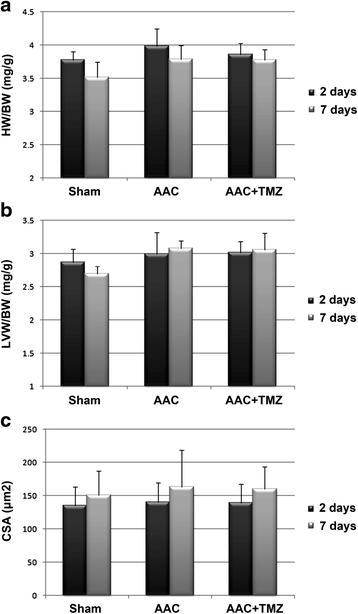
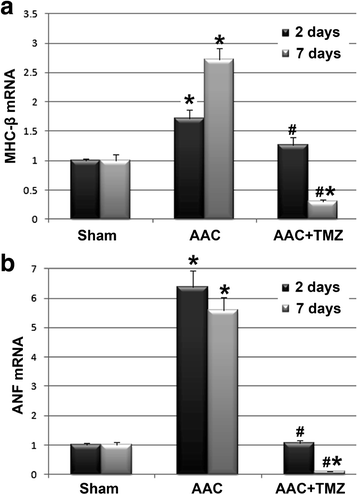
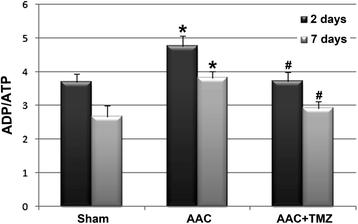
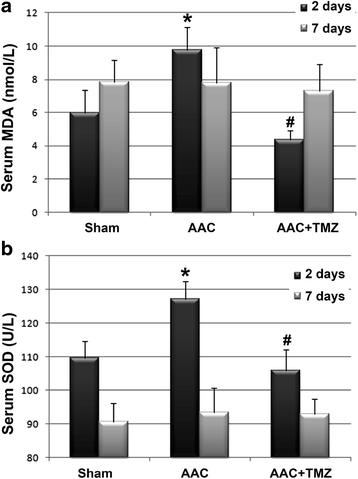


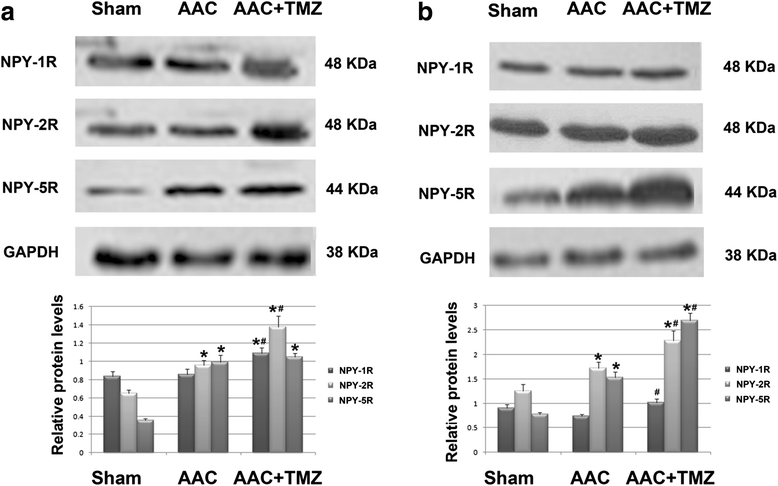
Similar articles
-
Metformin Improves Cardiac Metabolism and Function, and Prevents Left Ventricular Hypertrophy in Spontaneously Hypertensive Rats.J Am Heart Assoc. 2020 Apr 7;9(7):e015154. doi: 10.1161/JAHA.119.015154. Epub 2020 Apr 4. J Am Heart Assoc. 2020. PMID: 32248762 Free PMC article.
-
Cardiac insulin-resistance and decreased mitochondrial energy production precede the development of systolic heart failure after pressure-overload hypertrophy.Circ Heart Fail. 2013 Sep 1;6(5):1039-48. doi: 10.1161/CIRCHEARTFAILURE.112.000228. Epub 2013 Jul 16. Circ Heart Fail. 2013. PMID: 23861485
-
A novel traditional Chinese medicine ameliorates fatigue-induced cardiac hypertrophy and dysfunction via regulation of energy metabolism.Am J Physiol Heart Circ Physiol. 2019 Jun 1;316(6):H1378-H1388. doi: 10.1152/ajpheart.00731.2018. Epub 2019 Apr 5. Am J Physiol Heart Circ Physiol. 2019. PMID: 30951366
-
NPY and cardiac diseases.Curr Top Med Chem. 2007;7(17):1692-703. doi: 10.2174/156802607782340939. Curr Top Med Chem. 2007. PMID: 17979778 Review.
-
Substrate metabolism, hormone interaction, and angiotensin-converting enzyme inhibitors in left ventricular hypertrophy.Diabetes. 1996 Jan;45 Suppl 1:S59-65. doi: 10.2337/diab.45.1.s59. Diabetes. 1996. PMID: 8529802 Review.
Cited by
-
A review on experimental surgical models and anesthetic protocols of heart failure in rats.Front Vet Sci. 2023 Mar 27;10:1103229. doi: 10.3389/fvets.2023.1103229. eCollection 2023. Front Vet Sci. 2023. PMID: 37051509 Free PMC article. Review.
-
Effects of trimetazidine on ventricular remodeling in coronary artery disease patients with left ventricular hypertrophy: the rationale and design of a randomized controlled trial.BMC Cardiovasc Disord. 2020 Jun 5;20(1):273. doi: 10.1186/s12872-020-01557-3. BMC Cardiovasc Disord. 2020. PMID: 32503494 Free PMC article.
-
Function and Mechanism of Trimetazidine in Myocardial Infarction-Induced Myocardial Energy Metabolism Disorder Through the SIRT1-AMPK Pathway.Front Physiol. 2021 Jun 17;12:645041. doi: 10.3389/fphys.2021.645041. eCollection 2021. Front Physiol. 2021. PMID: 34220528 Free PMC article.
References
-
- McMurray JJ, et al. ESC guidelines for the diagnosis and treatment of acute and chronic heart failure 2012: the Task Force for the Diagnosis and Treatment of Acute and Chronic Heart Failure 2012 of the European Society of Cardiology. Developed in collaboration with the Heart Failure Association (HFA) of the ESC. Eur J Heart Fail. 2012;14(8):803–869. doi: 10.1093/eurjhf/hfs105. - DOI - PubMed
-
- Yancy CW, et al. 2013 ACCF/AHA guideline for the management of heart failure: executive summary: a report of the American College of Cardiology Foundation/American Heart Association Task Force on practice guidelines. Circulation. 2013;128(16):1810–1852. doi: 10.1161/CIR.0b013e31829e8807. - DOI - PubMed
Publication types
MeSH terms
Substances
LinkOut - more resources
Full Text Sources
Other Literature Sources
Miscellaneous

